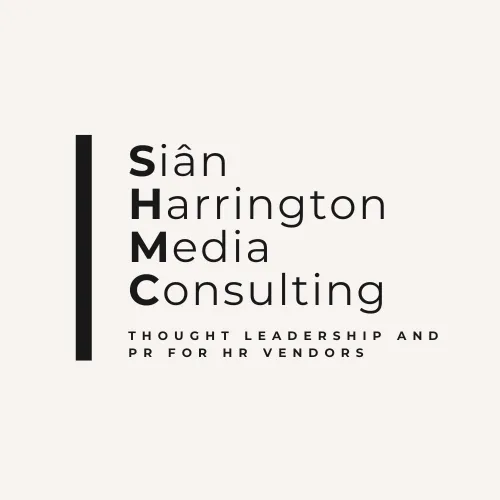Avoiding the Top 10 PR Mistakes: An HR Vendor's Guide to Winning Over Journalists

Discover the top 10 PR mistakes HR vendors make when pitching to journalists and learn how to avoid them. Enhance your media coverage by mastering these essential strategies
In the competitive world of HR vendors getting your story in front of the right journalists can feel like a Herculean task. The stakes are high: land a story in a respected publication and your brand gains credibility, visibility and a significant edge over the competition. But too often vendors sabotage their own efforts with common, yet avoidable, mistakes in their PR strategies. As a business journalist of some 30 years and now editorial director of The People Space I'm on the receiving end of these mistakes every day.
If you’ve ever found yourself frustrated by a lack of response from journalists or perplexed as to why your pitches aren't gaining traction,you're not alone. Let’s dive into the 10 biggest mistakes HR vendors make when pitching to journalists – and how to fix them.
1. The follow-up frenzy: When persistence turns into pestering
The Mistake: Excessive follow-ups can be the death knell of even the most promising PR pitch. Vendors, eager to ensure their pitch gets noticed, often fall into the trap of sending repeated follow-up emails. While the intention is to keep the pitch top of mind the reality is that journalists, already inundated with hundreds of emails daily, can quickly become annoyed. For example, I get around 200 emails a day. Getting chased with another email to check I received the first one (which is often irrelevant to my readership) can be very frustrating to say the least.
The Impact: Instead of standing out your pitch gets buried in the clutter. Excessive follow-ups not only clog inboxes but also damage your reputation, making journalists less inclined to engage with you in the future.
The Fix: Make your initial pitch count by crafting a compelling, clear and relevant message. If a follow-up is necessary ensure it adds value by providing additional information or updates that enhance the original pitch. Limit your follow-ups to one or two, spaced out appropriately to respect the journalist's time.
2. The personal touch: Why generic emails fail
The Mistake: In a world where personalisation is key many vendors still send out generic email pitches. The convenience of mass emailing often overshadows the need for a more tailored approach, leading to pitches that feel impersonal and are easily ignored.
The Impact: Without a personal touch your pitch is likely to miss engagement opportunities. Generic emails fail to stand out and can make you appear lazy or uninterested in the journalist's work, damaging your credibility.
The Fix: Invest time in researching your recipients. Understand the topics they cover, their previous work and their interests. Use this information to craft a personalised pitch that resonates with the journalist. Whenever possible opt for a phone call over an email to create a more personal connection and receive immediate feedback.
3. Storytelling shortfalls: Turning data into a narrative
The Mistake: Too many pitches focus solely on data without weaving it into a compelling narrative. Journalists are looking for stories that captivate their audience, not just raw information. When pitches lack conflict, characters and context, they fail to capture attention.
The Impact: A pitch without a strong narrative is unlikely to stand out in a crowded inbox. Poor storytelling reduces engagement and makes your pitch less memorable and effective.
The Fix: Incorporate the elements of a good story into your pitches. Identify the problem your pitch addresses and make it the focus. Introduce characters, such as real people affected by the issue or experts who can provide insights and provide context to explain why the story is relevant now.
4. The future shock: Avoiding irrelevant predictions
The Mistake: HR vendors often make the mistake of focusing on far-future predictions rather than current trends. While showcasing forward-thinking ideas may seem like a good way to position yourself as a thought leader, it can backfire if your pitch feels out of touch with the immediate issues journalists are covering.
The Impact: Focusing too much on the future can make your pitch seem disconnected from current conversations, reducing its relevance and credibility. Journalists are more interested in timely, actionable content that resonates with their audience now.
The Fix: Stay informed about current industry trends and ensure your pitches are timely and relevant. If you include future predictions tie them to present issues to demonstrate their immediate relevance. Highlight practical applications of your insights to make your pitch more actionable and engaging.
5. Evidence vacuum: The perils of unsupported claims
The Mistake: A lack of credible evidence to support your claims is a surefire way to undermine your pitch. Some vendors rely on opinions or anecdotal evidence, failing to provide the reputable data that journalists need to substantiate their stories.
The Impact: Pitches that lack solid evidence are less convincing and can decrease your credibility. Journalists are more likely to pursue stories backed by data so failing to provide strong evidence makes it harder to win them over.
The Fix: Ensure your claims are supported by reputable data from credible sources such as industry reports, academic studies and well-regarded publications. Include specific statistics and data points in your pitch – and always cite your sources to add credibility and allow journalists to verify the information easily.
6. Abstract approaches: The missing real-life examples
The Mistake: Abstract pitches that lack real-life examples can be difficult for journalists to relate to. When vendors focus too much on theoretical concepts without grounding them in tangible scenarios their pitches fall flat.
The Impact: Without real-life examples your pitch can seem theoretical and less engaging. Journalists are looking for stories with real people and real situations, so a lack of specific examples reduces the appeal and impact of your pitch.
The Fix: Gather detailed case studies from your clients or industry reports and ensure you have permission to share these stories. Incorporate on-the-record comments from relevant people to add authenticity to your pitch. Highlight specific situations and outcomes to illustrate your points, making your pitch more vivid and relatable.
7. The survey trap: When data becomes a marketing ploy
The Mistake: Using biased or self-serving surveys as evidence can quickly turn a pitch into what feels like a marketing ploy rather than a genuine journalistic story. Vendors often showcase positive survey results to enhance their credibility but this approach can backfire.
The Impact: Journalists can easily spot biased surveys, which undermines your credibility and trustworthiness. Pitches that rely on self-serving surveys are perceived as promotional rather than informational, reducing their appeal and engagement.
The Fix: Use data from independent and reputable third-party surveys to support your claims. Ensure transparency about how the survey was conducted, including the sample size, methodology and potential biases. Avoid overly promotional surveys and focus on providing unbiased, reliable data that meets journalistic standards.
8. The local trap: Ignoring the global perspective
The Mistake: Many vendors focus too narrowly on local issues, ignoring the broader global context. While local stories are important neglecting global perspectives can limit the relevance and impact of your pitch.
The Impact: A pitch that focuses only on local issues may not appeal to journalists covering broader, more global topics. Ignoring global perspectives can make your pitch seem less significant in the context of wider industry trends, reducing its appeal.
The Fix: Broaden your perspective by staying informed about global industry trends and incorporating these insights into your pitches. Use examples and case studies from different countries to show the global relevance of your story. Emphasise the broader implications of local issues to add depth and breadth to your pitch.
9. Copycat pitches: The downfall of unoriginal ideas
The Mistake: Pitching on trends that have already been extensively covered by rivals is a common misstep. While it may seem safe to follow popular trends this approach can make your pitch seem unoriginal and redundant.
The Impact: Pitches that follow well-trodden trends are less likely to stand out and can be perceived as lacking creativity. Journalists are looking for fresh angles, so rehashing old trends can waste their time and reduce your credibility.
The Fix: Before pitching research what has already been covered extensively and identify gaps or new angles that have not been explored. Look for unique perspectives or underrepresented aspects of a trend – and don’t be afraid to pitch innovative ideas that set you apart from the competition.
10. The jargon jungle: When language becomes a barrier
The Mistake: Using complex, jargon-filled language can turn a pitch into a confusing mess. While some vendors believe that technical jargon demonstrates expertise it often has the opposite effect, making the pitch difficult to read and understand.
The Impact: Jargon-filled pitches can confuse journalists, distract from the main point and frustrate the reader. This reduces the likelihood that the journalist will engage with your content or pursue the story further.
The Fix: Use clear, simple and direct language in your pitches. Avoid jargon and technical terms whenever possible and focus on making your pitch easy to understand. Keep your message concise and to the point, ensuring that the core story is quickly and easily grasped by the reader.
Conclusion: Mastering the art of the PR pitch
Avoiding these 10 common mistakes can significantly improve your PR efforts and increase your chances of getting your story in front of the right journalists. Remember, successful pitching isn’t just about getting your message out there – it’s about making sure your message is heard, understood and acted upon.
By crafting personalised, compelling and well-supported pitches, and by staying relevant to current trends while avoiding jargon and clichés, you’ll be well on your way to building stronger relationships with journalists and securing the media coverage that can elevate your brand.
So, take a step back, evaluate your current PR strategies and make the necessary adjustments. The next time you pitch to a journalist, you’ll be armed with the tools to make your story stand out from the rest.
How We Can Help
At Sian Harrington Media Consulting we specialise in creating authentic, relationship-building content that resonates with HR professionals. Our services include:
- Tailored content creation: We develop personalised content that speaks directly to the needs of HR decision-makers.
- Thought leadership development: We position you as an industry expert through insightful and authoritative content.
- Ongoing engagement strategies: We help you maintain meaningful relationships with potential clients through regular, valuable interactions.
- Expert PR: We help you build relationships with the most important HR and leadership publications
By focusing on authenticity and relationship-building you can effectively engage HR professionals and guide them towards choosing your solutions. Contact us today to learn how we can help you connect with HR leaders in meaningful and impactful ways.

